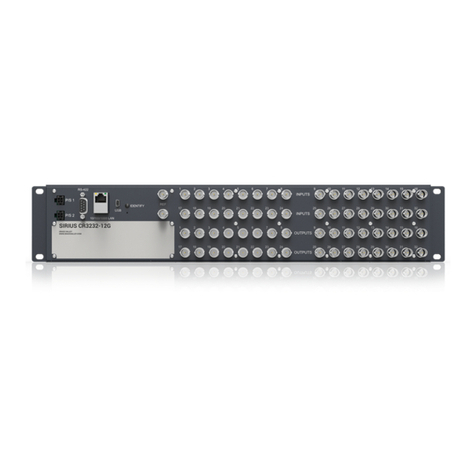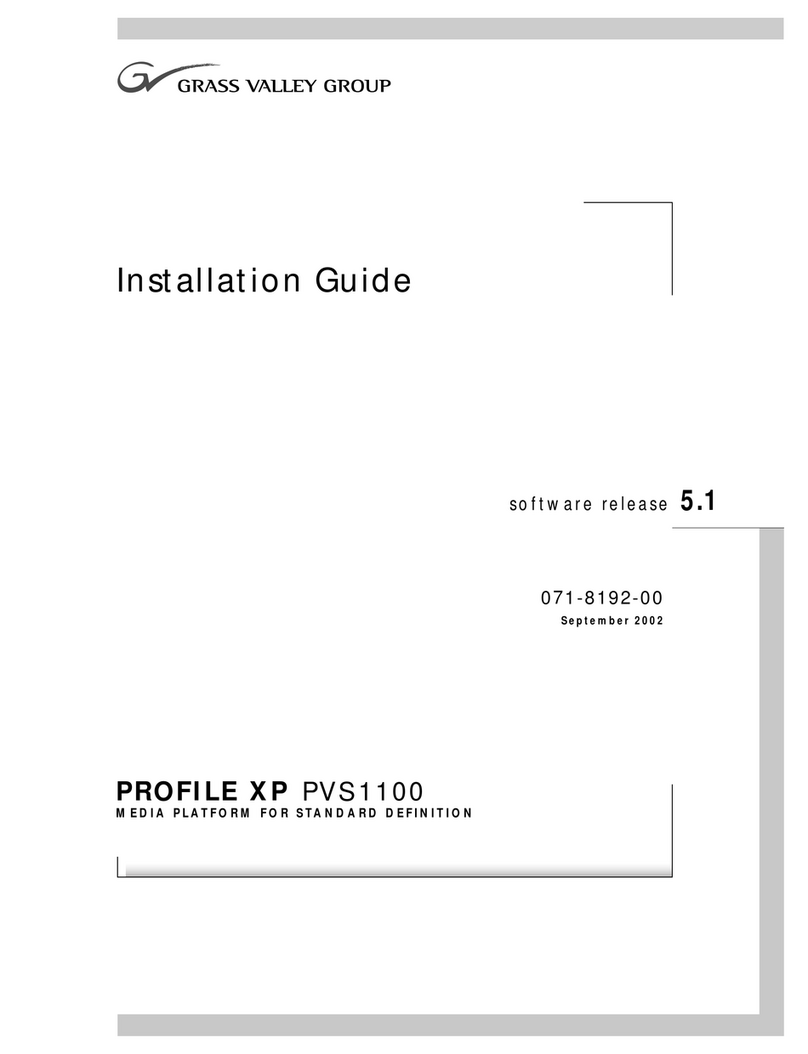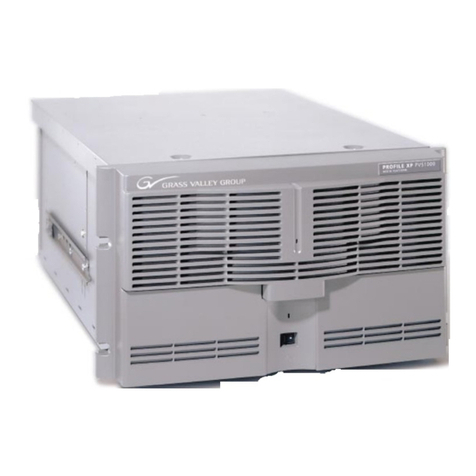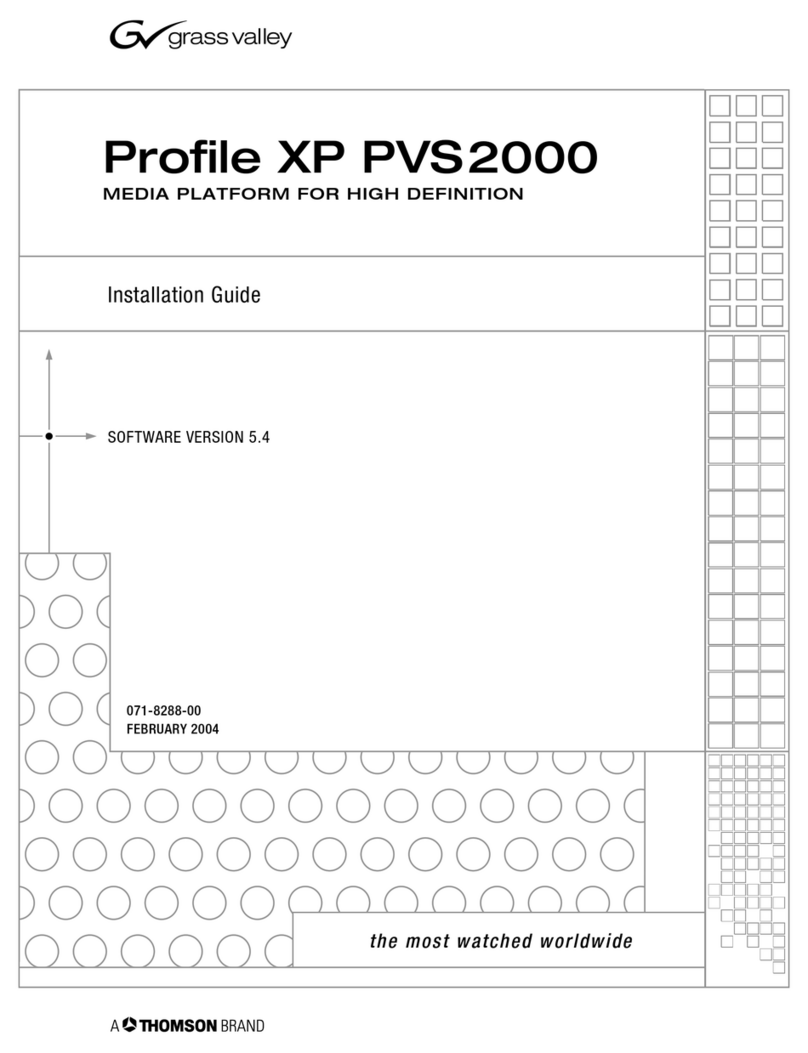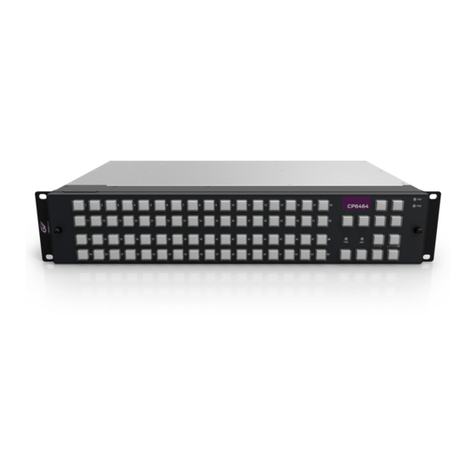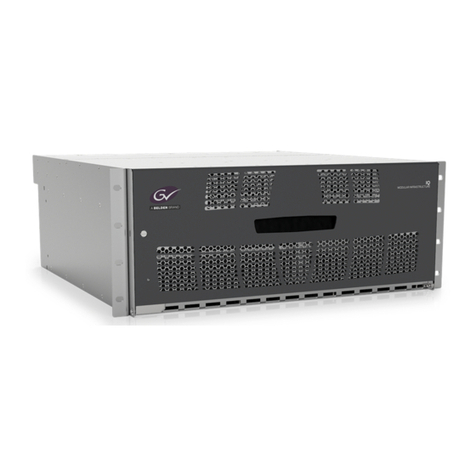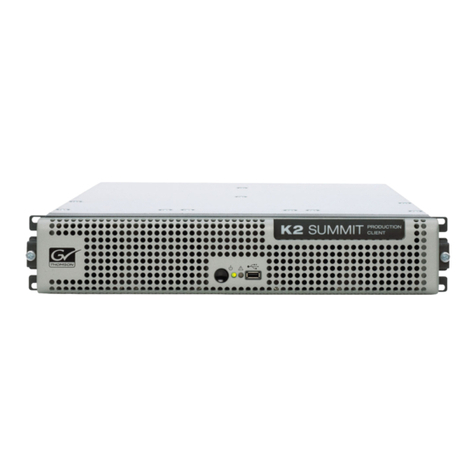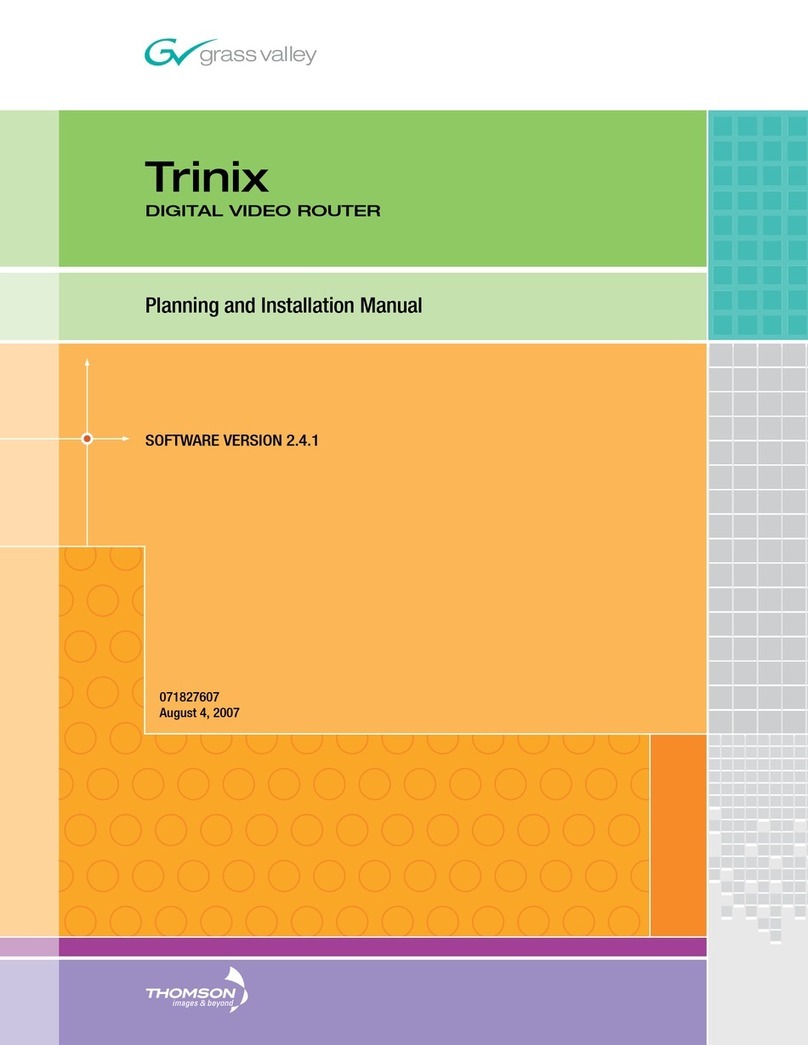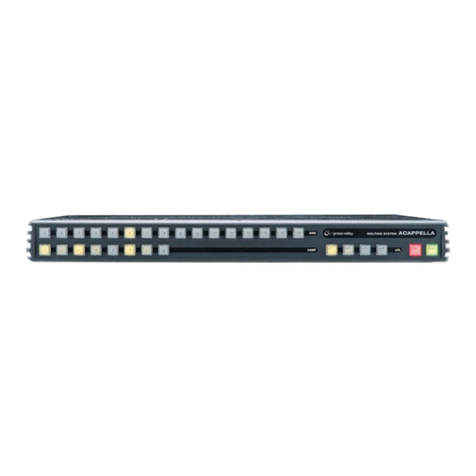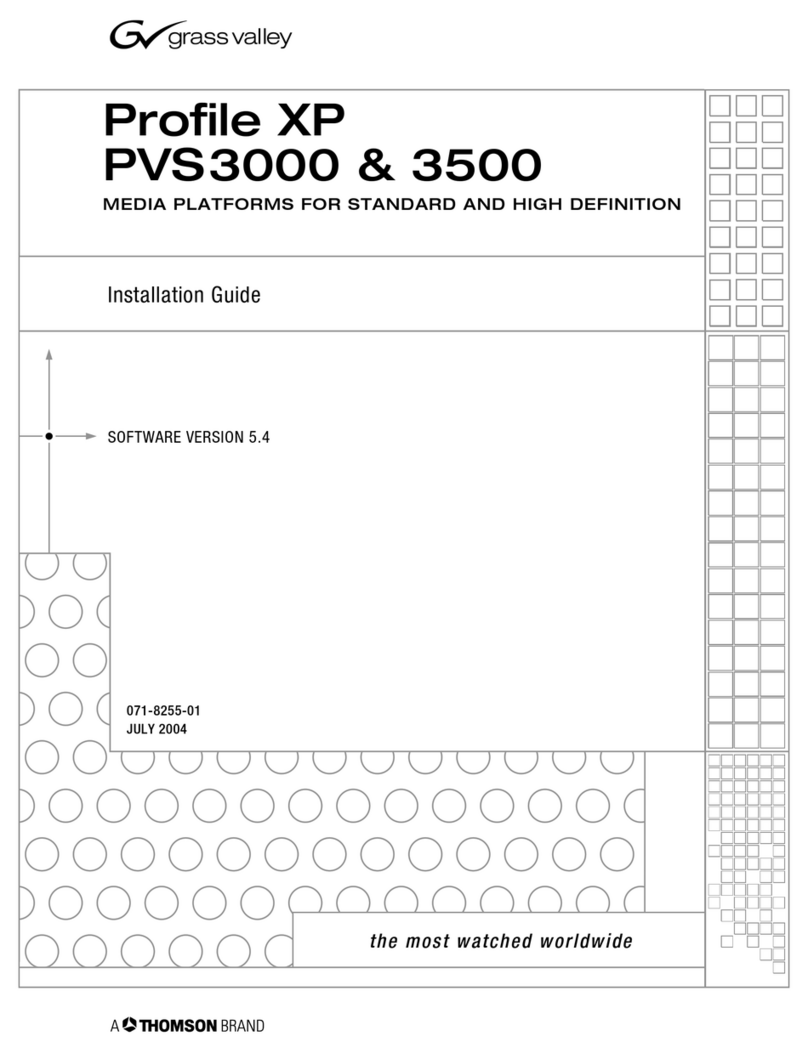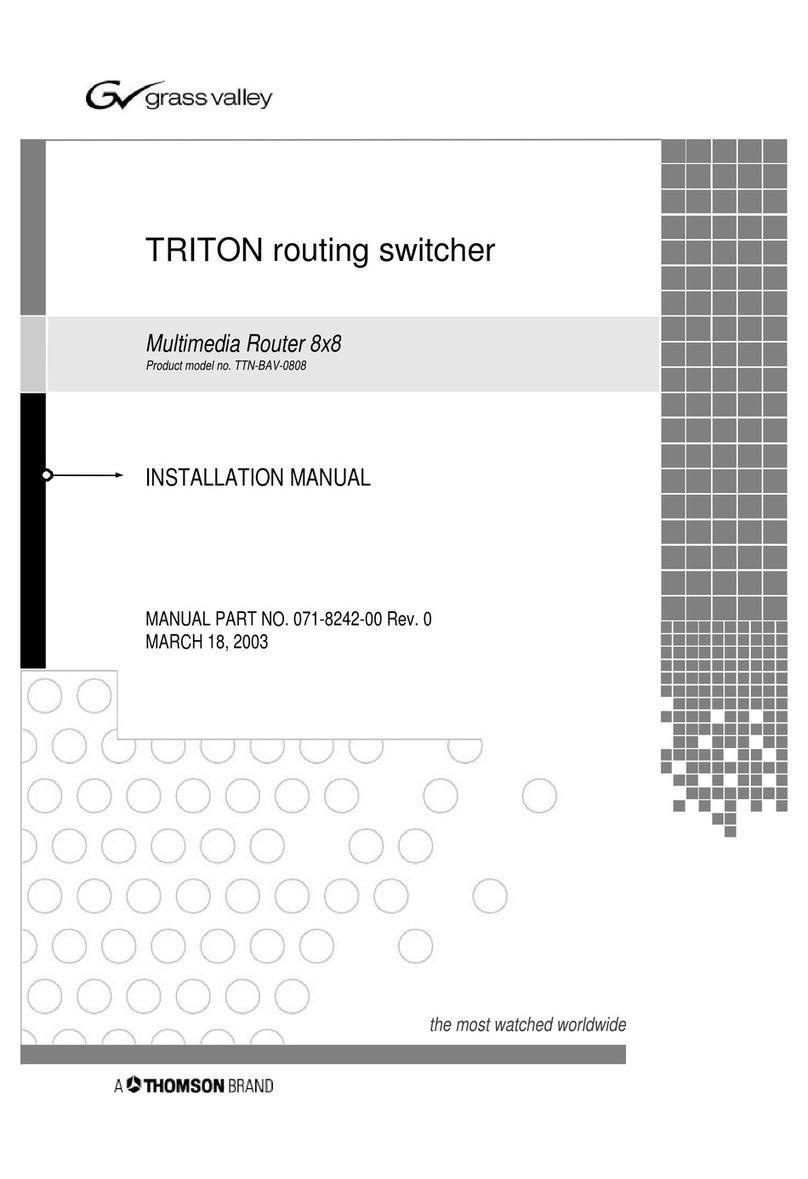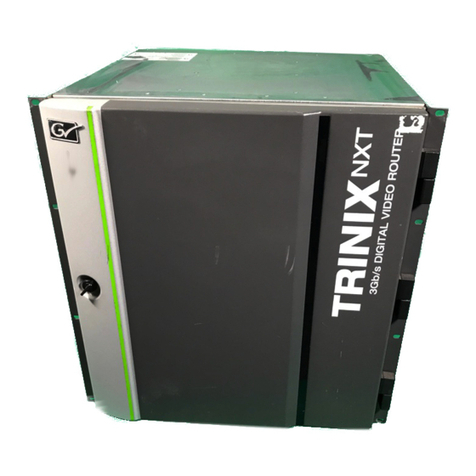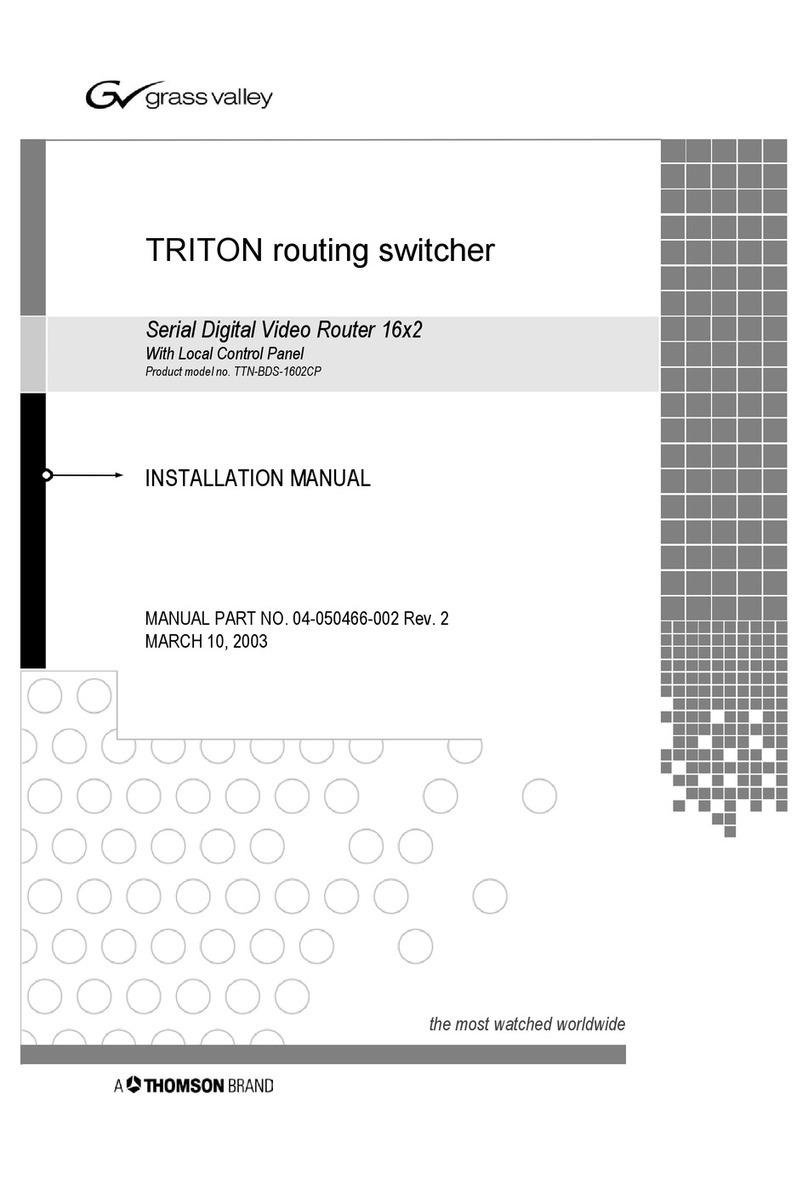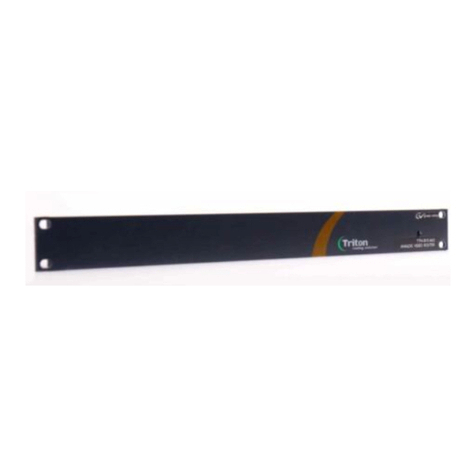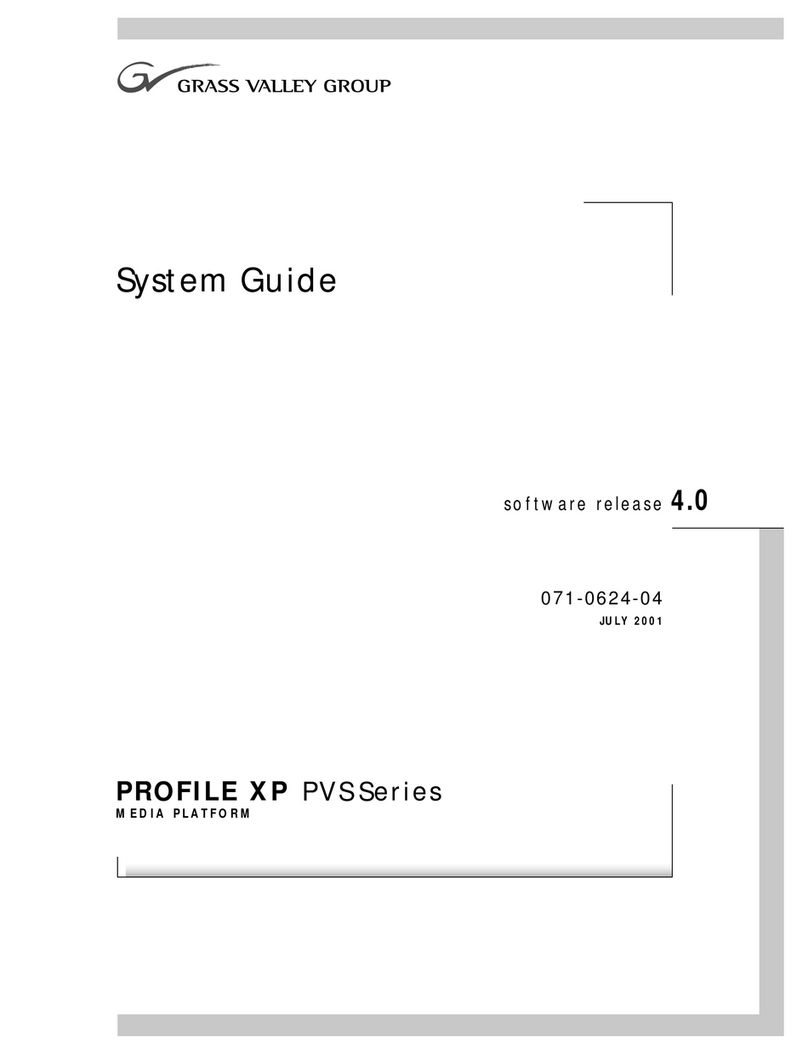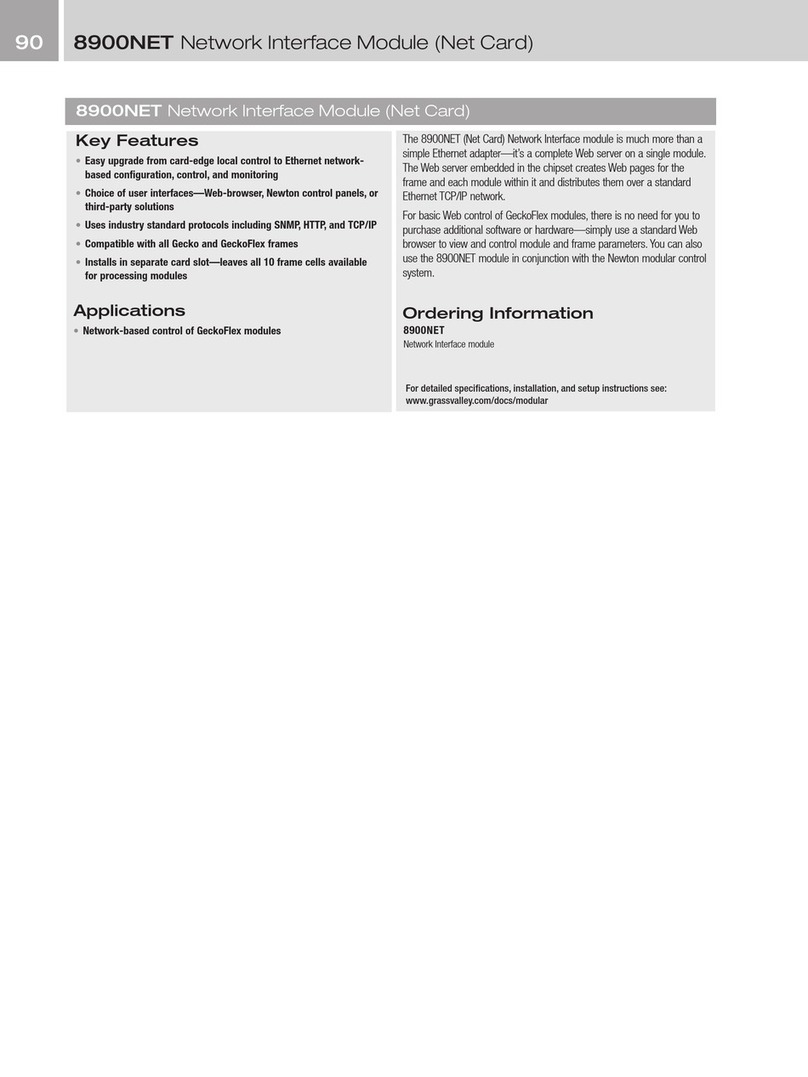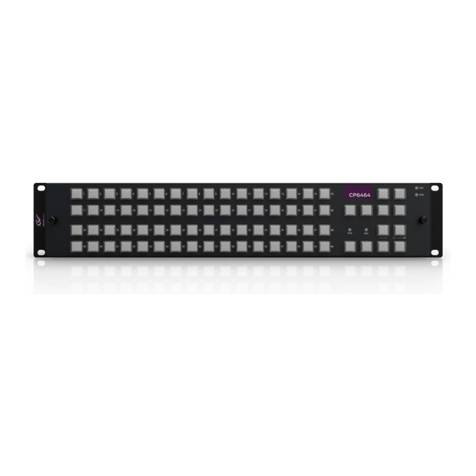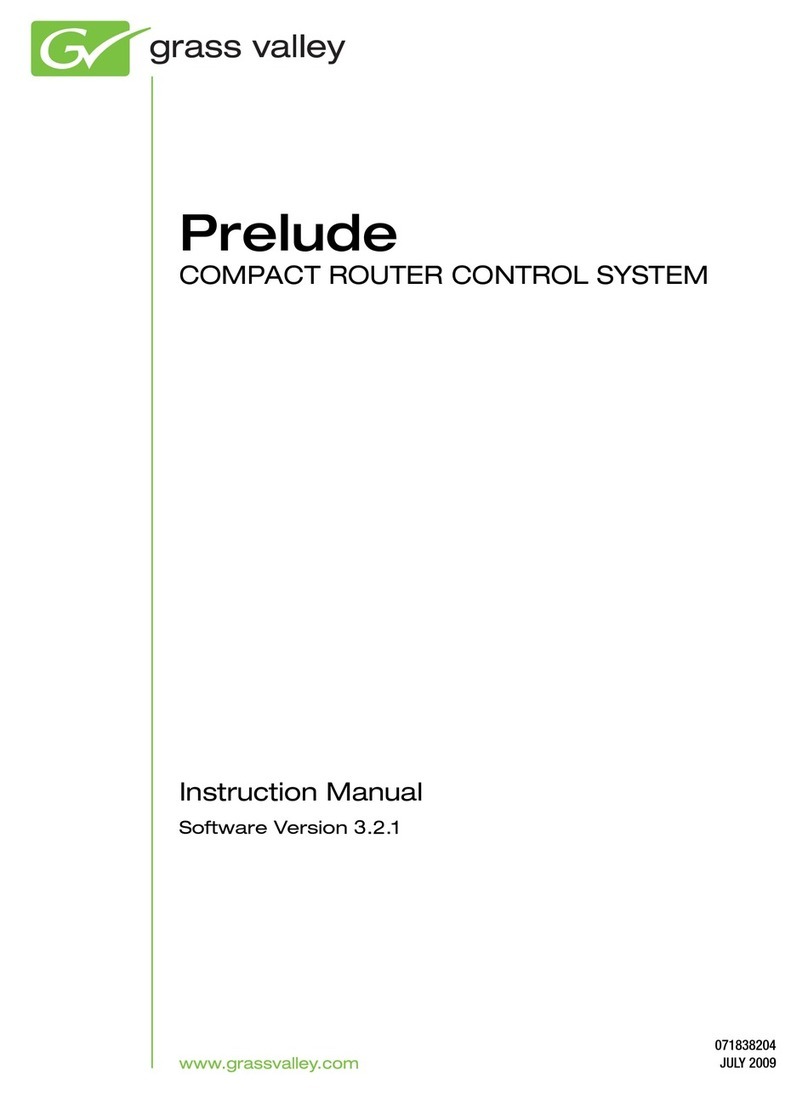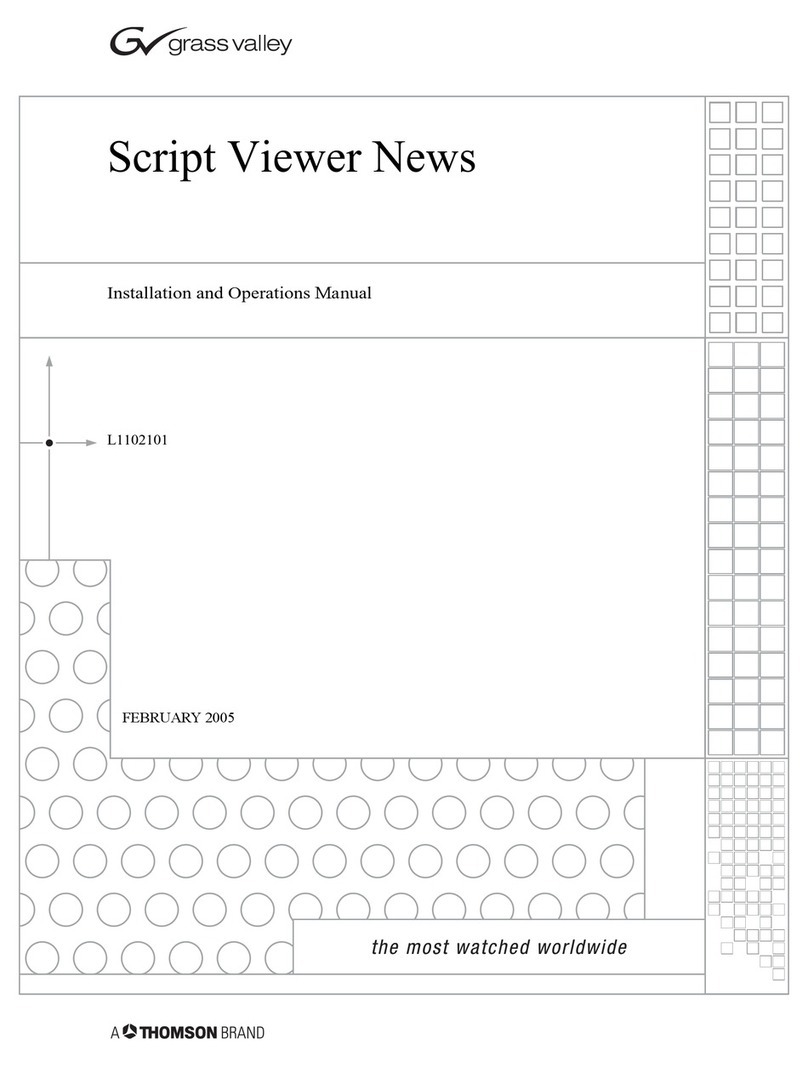
PRODUCT DATA SHEET
SPECIFICATIONS
Electrical
General
Input Cards: SI-33110 (SD), VI-33100
(SD/HD/AV), HI-33200 (SD/HD), and HI-
3G (SD/HD/3 Gb/s) – 32 inputs each
Matrix Cards:
DM-33100 (SD/HD) 128x128•
DM-33512 (SD/HD) 256x256•
DM128R-3G (SD/HD/3G) 128x128•
with redundancy
DM128-3G (SD/HD/3G) 128x128•
without redundancy
DM256-3G (SD/HD/3G) 256x256•
Output Cards: SO-33110 (SD), HO-33120
(SD/HD), and HO-3G (SD/HD/3 Gb/s).
32 inputs each. The SO-33110 is non-
reclocking. The HO-33120 and HO-3G are
reclocking for all standard rates of
143 Mb/s to 1.5 Gb/s (HO-33120) and
143 Mb/s to 3 Gb/s (HO-3G)
Connectors: 75Ω BNC
Video Inputs
Level: 800 mVp-p (±10%) 75Ω
terminating
Return Loss: ≥15 dB up to 1.5 GHz,
≥10 dB 1.5 GHz to 3 GHz
SD: ≥15 dB from 5 MHz to 540 MHz
Sync Inputs
Level: Nominal 1 Vp-p (±6 dB) video
Return Loss:
≥40 dB from 100 kHz to 20 MHz•
≥30 dB from 20 MHz to 30 MHz•
Video Outputs
Level: 800 mV p-p ±10% 75Ω
Return Loss: ≥15 dB up to 1.5 GHz,
≥10 dB 1.5 GHz to 3 GHz (except monitor
outputs)
Performance Characteristics
Signal Standards: SMPTE 424M,
SMPTE 292M-1998, SMPTE 259M-1997
(output rise and fall times correspond to
SMPTE 292M)
Equalization:
3 Gb/s: automatic up to 140 meters•
of Belden 1694A or equivalent coax
cable
HD: automatic up to 160 meters of•
Belden 1694A
SD: Automatic up to 450 meters of•
Belden 1694A
Data Reclocking: Switch selectable on
an output-by-output basis
Output Jitter:
3 Gb/s: ≤0.3 UI•
HD: ≤0.2 UI•
SD: ≤0.2 UI•
AV to SD-SDI Conversion:
Signal type: NTSC, PAL•
Signal level: 0.5 – 2 Vp-p, 1 Vp-p•
nominal 75Ω terminating
Return loss: input >40 dB to•
5.75 MHz, output >15 dB to 270 Mb/s,
reference >36 dB to 5 MHz
Signal/noise: >59 dB RMS to 5.5 MHz•
Luma frequency response: ± 0.1 dB•
to 5 MHz
Chroma/luma delay: <10 ns•
Differential phase: <1 degree•
Differential gain: <1%•
AC Power Input
Mains Connection: IEC connector,
separate mains input for each power
supply module
Voltage Range: 100-240V
50-60 Hz, universal, auto-ranging (fuses
must be selected and installed as
appropriate for mains voltage)
reason, the Trinix NXT routing switcher
can deliver the additional protection of a
redundant solution without degrading its
reliability.
Protected Router
The protected router system uses
the same dual-path system as the
protected-path scheme and has the same
high-reliability passive-path selection.
Because it protects the whole router the
second routing switcher takes over if any
component fails for any reason.
Duplicate routing switchers may seem
extravagant, but in key situations they
make a lot of sense. Remember that if
you install two routing switchers in a
dual redundant configuration you do not
need redundant components within each
routing switcher, an on-the-shelf spare,
or even a patch bay. Rather than have
your backup solutions on the shelf, you
can have them online 24x7, waiting and
ready to automatically switch on.
Leading Connectability
Four reference sources, two standard
and two optional, give you the flexibility
to operate multiple timing planes, or
even multiple video standards, within
one Trinix NXT chassis. They also
enable you to partition the routing
switcher to support different operational
requirements simultaneously.
The Trinix NXT routing switcher can also
support dual outputs saving the need
for bulky, costly external distribution
amplifiers. This support is made possible
by adding passive external splitters to
deliver the extra copies of the signals.
The platform also includes four monitor
outputs. Unlike assigning normal outputs
to monitoring duties, these are true
output monitors so you can really see the
signal leaving the routing switcher, not
just another copy of the input.
The Trinix NXT routing switcher is
supported by all Thomson Grass Valley™
control systems. These include the
Encore™facility control system, Jupiter™
router control system, and Series 7000
control system.
The routing switcher also fully supports
SNMP, allowing it to easily integrate
into your standard monitoring systems
including the Thomson NetCentral™
monitoring application.
To streamline the setup process, the
Trinix NXT platform supports our
NetConfig™application. This Ethernet-
based software streamlines product
installation and in-field upgrades.
Superior Serviceability
As they are designed to be online 24
hours a day, 365 days a year, Trinix NXT
routing switchers have been engineered
from the bottom up for serviceability. All
active signal path components are hot-
swappable from the front of the frame,
and the backplanes are all completely
passive.
Power supplies, controller card, blowers
and some matrix cards can be installed in
redundant configurations.
Should a failure occur, the Trinix NXT
routing switcher includes red LED
displays indicating the alarm status and
locating the affected area. A GPI, which
can be connected to an external system,
is set and detailed warnings are sent via
the network using SNMP protocol.
The comprehensive alarm system,
multifaceted communications, and easy
parts replacement of the Trinix NXT
routing switcher ensures that it keeps
running with minimal service effort.
Frame-Size Choice
The Trinix NXT routing switcher offers
an unrivalled choice of frame sizes to
match your performance and density
requirements. The available sizes include
128x128, 256x256, and 512x512.
Larger routing switchers can be
constructed using several frames with
many HD-SDI examples up to 2048
already in operation.
Analog Input Flexibility
The unique variable input (VI) card of the
Trinix NXT platform provides the ultimate
in simplicity for those on a migration
path from analog to digital. With support
for signal types from analog composite
through SDI digital to HD-SDI rates,
the VI card provides a comprehensive
solution. Its exceptional flexibility allows
it to handle each input individually so that
you can migrate systems, one circuit at a
time, from analog to HD-SDI.
In other systems, you have to change an
entire card to upgrade part of the router,
meaning that changes have to be planned
in groups that suit the router, not your
operation.
